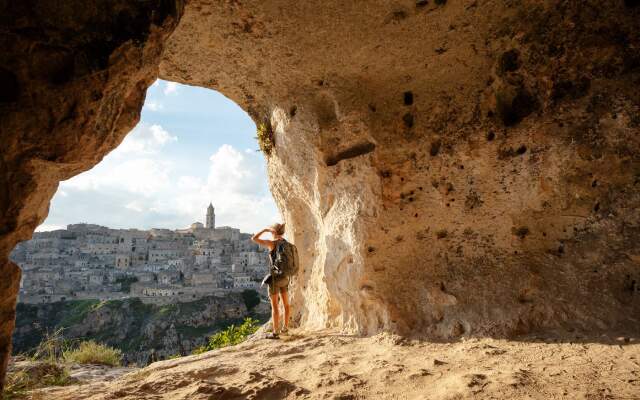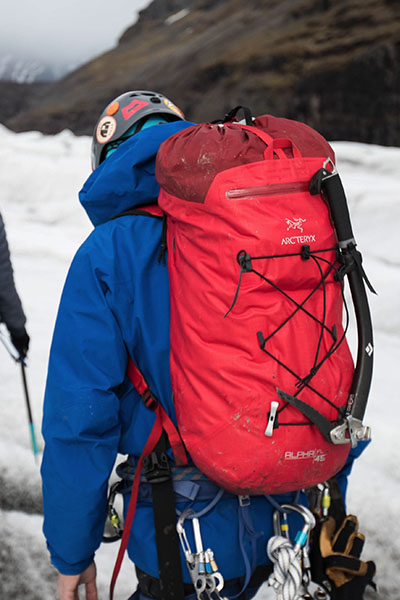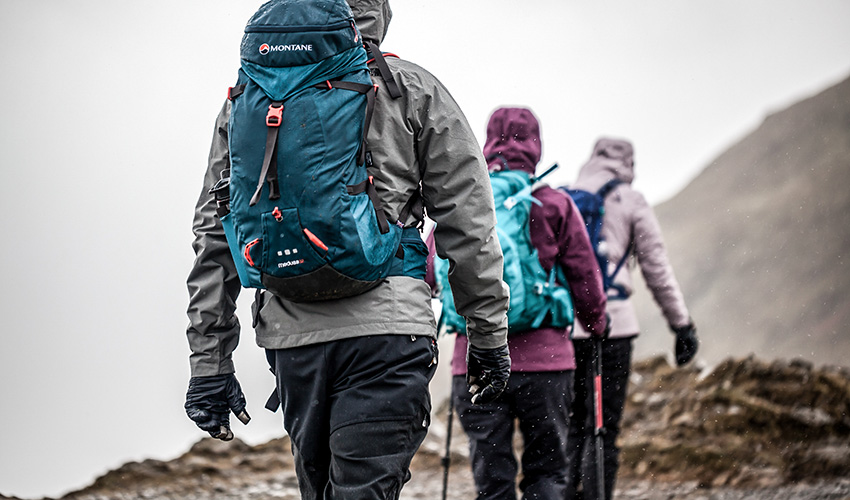Rucksack Buying Guide
How to Choose the Perfect Pack for Hiking, Travel & Everyday Use
Let’s face it-finding the perfect rucksack can feel a bit like searching for a needle in a haystack. With a dizzying array of styles, sizes, and features on the market, it’s no wonder so many of us end up scratching our heads in the shop aisle (or scrolling endlessly online). But here’s the good news: choosing the right rucksack doesn’t have to be complicated, and getting it right can make every adventure-from a gentle country stroll to a wild weekend in the mountains-so much more enjoyable.
How to Choose the Right Rucksack Size
Rucksack Capacity Chart
| Activity | Duration | Recommended Size | Ideal For |
|---|---|---|---|
| Day Hiking/Commuting | < 1 Day | 10-25L | Water, snacks, lightweight layers |
| Weekend Trips | 1-2 Days | 30-50L | Camping gear, extra clothing |
| Multi-Day Trekking | 3-5 Days | 50-70L | Sleeping bags, tents, cooking kits |
| Expedition Travel | 5+ Days | 70L+ | Winter gear, bulkier equipment |
Pro Tip: For travel, consider a 40-50L pack with front-loading access (e.g., Osprey Farpoint 40) to meet airline carry-on limits

Types of Rucksacks
When it comes to choosing a rucksack, understanding the different types available-and what each is designed for-can make all the difference. The right pack will not only fit your gear but also your lifestyle, whether you’re heading out for a quick trail run, a multi-day trek, or a round-the-world adventure. Here’s a breakdown of the main rucksack types, what sets them apart, and what to look for in each.
Daypacks (Daysacks)
Best for: Single-day hikes, city exploring, commuting, or gym trips
Typical capacity: 10–35 litres
Daypacks are small, lightweight rucksacks designed to carry just the essentials for a day out. They’re perfect for short walks, day hikes, or everyday use. While they don’t usually have the robust support systems of larger packs, many daypacks still feature handy extras like hydration sleeves, side pockets, and even chest or hip straps for stability. Some models are tailored for commuters, offering padded laptop sleeves and organisational pockets.
Fast-Paced Activity Rucksacks
Best for: Running, cycling, or fast hiking
Typical capacity: 10–25 litres
These rucksacks are all about speed and efficiency. Designed to be as light and close-fitting as possible, they’re perfect for activities where you want to move fast and carry only the bare minimum-think water, an emergency layer, and a snack. Many include built-in or compatible hydration bladders, allowing you to drink on the go. The fit is snug to prevent bouncing, and the design is streamlined to reduce drag.
Hiking Rucksacks
Best for: Day hikes, hillwalking, or short overnight trips
Typical capacity: 20–40 litres
Hiking rucksacks are a step up from daypacks, offering more space and support for longer days out or lightweight overnight adventures. They’re designed with comfort in mind, often featuring padded hip belts, adjustable back systems, and plenty of pockets for easy access to your kit. Look for features like trekking pole holders, rain covers, and robust fabrics for durability.
Backpacking Rucksacks
Best for: Multi-day hikes, wild camping, expeditions
Typical capacity: 50–80+ litres
Backpacking rucksacks are built for carrying heavier loads over longer distances. They feature advanced support systems, such as internal frames and adjustable harnesses, to distribute weight evenly and reduce fatigue. These packs often include multiple access points, compression straps, and dedicated compartments for sleeping bags and other bulky kit. If you’re heading out on a Duke of Edinburgh expedition, a festival, or a week-long trek, this is the type of pack you’ll need
Travel Rucksacks (Travel Packs)
Best for: Backpacking holidays, gap years, long-term travel
Typical capacity: 40–70 litres
Travel rucksacks are designed with globe-trotters in mind. They combine the carrying comfort of a hiking rucksack with the convenience of a suitcase. Most feature a large, suitcase-style opening for easy packing, stowable harnesses for airport travel, and often a detachable daypack for exploring without your main bag. Some even have wheels for city travel. Security features like lockable zips and hidden pockets are common.
What Are Rucksacks Made Of?
Synthetic Fabrics
- Cordura Nylon (1000D): 12,000+ abrasion cycles; 90% UV resistance
- Ripstop Polyester: 40% lighter than nylon; 5,000mm waterproof rating when PU-coated
- Dyneema® Composite: 15x stronger than steel by weight; used in ultralight packs
Waterproofing Technologies
| Technology | Protection Level | Best For |
|---|---|---|
| DWR Coating | Light rain | Daypacks |
| Welded Seams | Heavy downpour | Expedition packs |
| ROKMAN WATERLOK™ | Submersion | River crossings |
Pro Tip: Look for aquaguard zippers (8,000+ cycles) and TPU laminates for true waterproofing
Technical Packing Guide: Military-Grade Organisation
Weight Distribution Principles
- Bottom 25%: Sleeping bag, soft items (density <0.3g/cm³)
- Middle 50%: Heavy gear (stoves, food) close to back
- Top 25%: Frequently needed items (rain jacket, GPS)
Compression Engineering
- Static Loads: Use side straps to reduce pack volume by 15-20%
- Dynamic Loads: Cargo nets + daisy chains for trekking poles/ice axes
Mountaineering vs Backpacking Packs
Integrated Solutions
- ROKMAN METAMORPH™: Modular dry bags (IP67 rating) + submersible zippers
- Exped DrySacks: 10D silnylon liners for 100% waterproof compartments
Aftermarket Upgrades
- Seam Sealing: Silicone tape (3M 9482PC) increases waterproofness by 40%
- DWR Renewal: Nikwax TX.Direct restores 90% water repellency
5 Must-Have Rucksack Features (Based on 2025 Trends)
- Hydration Compatibility → Look for a dedicated bladder sleeve and tube port (e.g., CamelBak reservoirs).
- Rain Cover → Integrated or sold separately (e.g., Deuter packs with Dry.Cover).
- Adjustable Torso Length → Ensure even weight distribution (critical for packs >30L).
- Lockable Zips → Essential for urban travel (featured in Pacsafe and Eagle Creek models).
- Gear Attachment Points → Daisy chains, ice axe loops, and trekking pole holders
How to Fit a Rucksack Correctly (Step-by-Step)
- Measure Your Torso: Use a flexible tape measure from C7 vertebra to iliac crest.
- Adjust the Harness: Slide the shoulder straps to match your torso length.
- Secure the Hip Belt: Position over your hips (not waist) and tighten until 70% weight transfers to legs.
- Fine-Tune Load Lifters: Pull straps at a 45° angle to keep the pack close to your back.
- Common Mistake: Overtightening shoulder straps → Causes numbness in fingers.
Women’s vs. Men’s Rucksacks: What’s the Difference?
- Women’s Packs: Shorter torso lengths, S-curve shoulder straps, narrower hip belts.
- Men’s Packs: Longer torso designs, straighter harnesses.
Best for Women: Osprey Sirrus 24 (day hikes), Deuter Aircontact Ultra 50+5 (trekking).
Top 5 Rucksack Brands at Cotswold Outdoor
- Osprey → Rucksacks with advanced suspension systems, highly breathable back panels, and ergonomic harnesses for maximum comfort on long hikes and backpacking trips.
- Lowe Alpine → Packs engineered for stability and support, featuring robust construction, innovative carry systems, and practical pocket layouts for technical hikes and mountain adventures.
- Fjällräven → Durable rucksacks crafted from hardwearing materials, offering classic Scandinavian design, spacious compartments, and versatile options for both trekking and everyday use.
- Rab → Lightweight, weather-resistant rucksacks designed for mountain pursuits, with streamlined profiles and secure gear attachment points for climbing and fast-moving activities.
- Mountain Equipment → Expedition-grade packs built for challenging environments, featuring reinforced seams, tough fabrics, and technical features suited to demanding treks and alpine conditions
Emerging Technologies: The Future of Rucksacks
- Solar Integration: Powerfilm 10W panels in lid compartments
- AI Fit Systems: Deuter’s Body Scan app measures 14 torso points
- Self-Healing Fabrics: Polyurethane coatings seal <3mm punctures

FAQs
A 50-60L pack is ideal for carrying a tent, sleeping bag, and food. For summer hikes, consider downsizing to 45L with compressible gear.
Yes, but prioritise packs with front-loading access (e.g., Osprey Farpoint) over top-loading designs.
- Spot-clean with mild soap.
- Air-dry upside down.
- Never machine-wash (damages waterproof coatings)
Aim for 1.8-2.3kg empty. Expedition models may reach 3kg with reinforced frames.
Related Articles

Let us know you agree to cookies
We use marketing, analytical and functional cookies as well as similar technologies to give you the best experience. Third parties, including social media platforms, often place tracking cookies on our site to show you personalised adverts outside of our website.
We store your cookie preferences for two years and you can edit your preferences via ‘manage cookies’ or through the cookie policy at the bottom of every page. For more information, please see our cookie policy.












